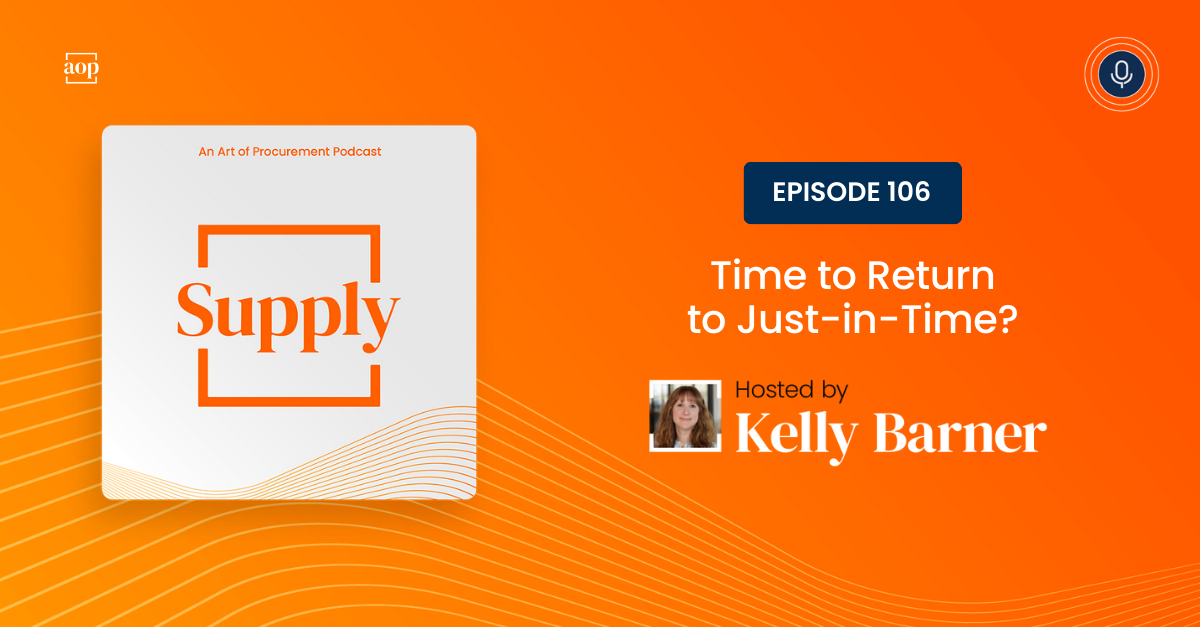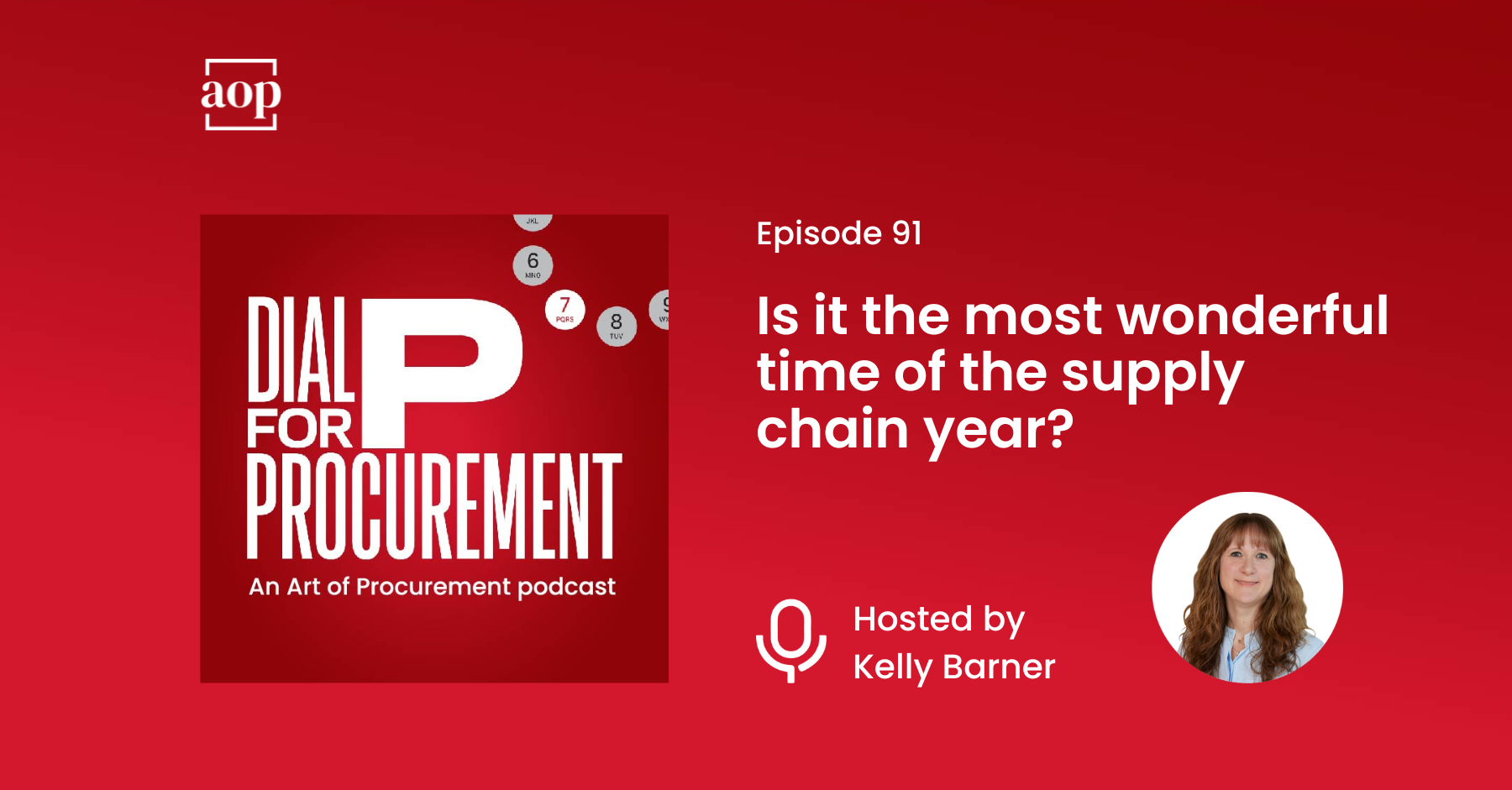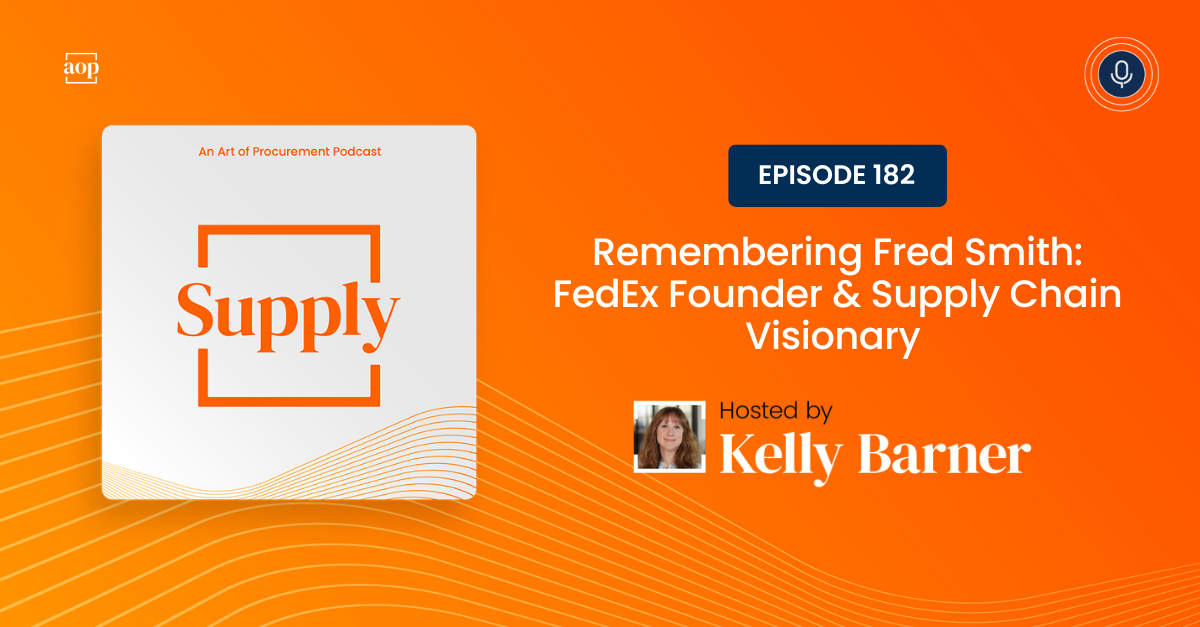
In 2005, Amazon revolutionized eCommerce delivery expectations with their 2-day Prime delivery service. All of a sudden, every other retailer was scrambling to keep up or at least manage expectations.
Nearly 20 years later, delivery competition has reached a new level – and altitude – with the expansion of drone-to-consumer final mile delivery.
Although drones are an exciting, futuristic way to get goods to homes quickly, they will have to prove they can be reliably and cost effectively operated at scale in alignment with existing FAA regulations.
The Dallas-Fort Worth metropolitan area is about to become a major drone proving ground. As the Wall Street Journal recently reported, Walmart and Amazon are competing to become leaders in this space. A recent change to FAA regulations in the area is about to make the 7.6 million people living in this region part of the race to drone dominance.
In this episode of Art of Supply, I cover the innovation, experimentation, and regulation that will all have to align before nationwide drone deliveries can become a reality.
Save Money. Live Better. LOOK UP.
Walmart’s tagline positions them as a family-friendly retailer that understands cost effectiveness and wellness often go hand in hand. How will drones fit into their customer experience?
The company is currently working with several drone operators to introduce drone delivery in specific parts of the country. Wing, Zipline, and DroneUP are all partnering with the company in various ways and different regions.
Wing is a unit of Alphabet, Google’s parent company, and Wing itself is a product of internal collaboration, having worked with another Alphabet testing ground Waymo, a self-driving car project. Both groups came out of “X,” Alphabet’s “moonshot factory,” not to be confused with the social media platform formerly known as Twitter.
Walmart’s drone coverage is expanding to cover 75 percent of the Dallas-Fort Worth area, the most populous metropolitan area in both Texas and the Southern United States and the fourth-largest in the U.S.
Drone operators Wing and Zipline have received FAA approval to make deliveries without a dedicated operator who can see the device at all times. This has expanded the delivery radius significantly.
Walmart has provided drone delivery to 4 million households in 6 states since 2022 (Arizona, Arkansas, Florida, Texas, Utah, Virginia) and recently added North Carolina. They made 6,000 drone deliveries in 2022.
Drone delivery is available between 8am and 8pm in as little as 30 minutes. Residential delivery costs $3.99 and can include eligible products that weigh under 10 pounds.
But as with all new markets and capabilities, progress is not a straight line. One of Walmart’s first drone partnerships was with DroneUp LLC in Arkansas. In May of 2023, DroneUp announced layoffs. Even with Walmart’s financial backing, the company is struggling, thanks, in part, to the lengthy regulatory approval process.
Make v. Buy
While Walmart is partnering with third parties to build their drone delivery capabilities, others are following another route.
Amazon is (unsurprisingly) building and operating their own drones as part of their “Prime Air” program. Their “octocopters” provide delivery in about 30 minutes, can carry up to 5 pounds, and have a 10-mile radius from Amazon’s drone-capable distribution centers.
Like DroneUp, Prime Air has faced challenges. Amazon laid off some members of the Prime Air drone team in January 2023. In addition to high staff turnover (which one Bloomberg article suggested was thanks to intense pressure to meet internal targets in the face of safety protocols), they have had a troubling accident record.
There have been multiple reports of crashes at Amazon’s drone test site in Oregon. One crash that happened in June of 2021 sparked a 20-acre fire that local fire departments had to be called to put out.
These incidents have led to run-ins between Amazon and the FAA. Sometimes Prime Air employees have moved the evidence before the FAA can arrive and inspect it. In other cases, the FAA arrives to inspect, and Amazon tells the FAA: No thank you. Your services are not required to inspect this area. (Note: Not really how it works.)
Small parcel companies are getting involved in drone development as well. UPS has their own drone business unit, called Flight Forward. FedEx is taking a different approach, focusing on the use of autonomous vertical take off and landing craft (VTOLs) to move goods between distribution centers. UPS has since followed suit, buying 10 VTOLs of their own.
The Cost Conundrum
Drone delivery is an expensive thing to innovate and deliver, even in the already expensive world of final mile delivery.
The “last 50 feet” is distance from truck to door. According to research by the University of Washington’s Urban Freight Lab, this part of the delivery process accounts for 20 percent to 50 percent of transportation costs. And, there is more: Giacomo Dalla Chiara, a lead researcher at the Lab, says that 28 percent of a driver’s time during delivery is spent searching for a parking spot.
The process that drives between a quarter and half of supply chain costs isn’t about delivery at all. It is about finding a place to stick the truck while the driver walks to the door. Could drones reduce the time and cost associated with this part of the final mile?
According to a post on McKinsey’s Future of Air Mobility blog, a drone delivering a single package has an estimated direct operating cost of $13.50.
That is more expensive than other vehicles covering the same delivery. An electric car costs $9.40 and an electric van costs $11. Interestingly, drones are significantly more expensive from a labor standpoint than the other two.
Remember, Walmart is charging consumers $3.99 to provide a service that costs at least $13.50 to deliver, and there is very little margin on the products they usually deliver via drone, mostly grocery items.
McKinsey predicts that drone operators will have to get to the point where they can manage 20 drones simultaneously, making a single package delivery cost $1.50 to $2. That is when drones will be positioned for wide scale success without costing retailers a prohibitive sum.
Tomorrow’s Logistics Today?
Drone final mile delivery is extremely cool, and while it seems impossibly futuristic, it is a reality today depending on where you live.
What we know, however, is that what seems cool to a consumer can pose an extremely sophisticated challenge for business leaders. There are two major challenges that will need to be overcome before drone deliveries take off the way 2-day Prime delivery did:
Challenge #1: Regulation: Currently overseen by the FAA, regulations will need to be centralized and standardized before drone delivery can scale. Once the drone market reaches a critical mass, it may also make sense to segment the applicable regulations from other aircraft. Drones currently operate under modified airplane regulations rather than having their own guidelines.
Challenge #2: Cost: It is not going to work to continue charging $3.99 for something that costs Walmart $13.50 to execute. And while we don’t have the numbers to make the comparison yet, the ‘make v. buy’ decision is already shaping up to be a key differentiator. Which model will win, and which retailers will that favor? Time will tell.
Jeff Bezos may have been wrong when he predicted an admittedly optimistic 5-year timeline for Amazon’s drone deliveries, but progress is being made fast and furious – you can be sure that where there is competition, the timeline towards a solution is being accelerated.
Links:
- Kelly Barner on LinkedIn
- Art of Supply LinkedIn newsletter
- Art of Supply on AOP
- Subscribe to This Week in Procurement




